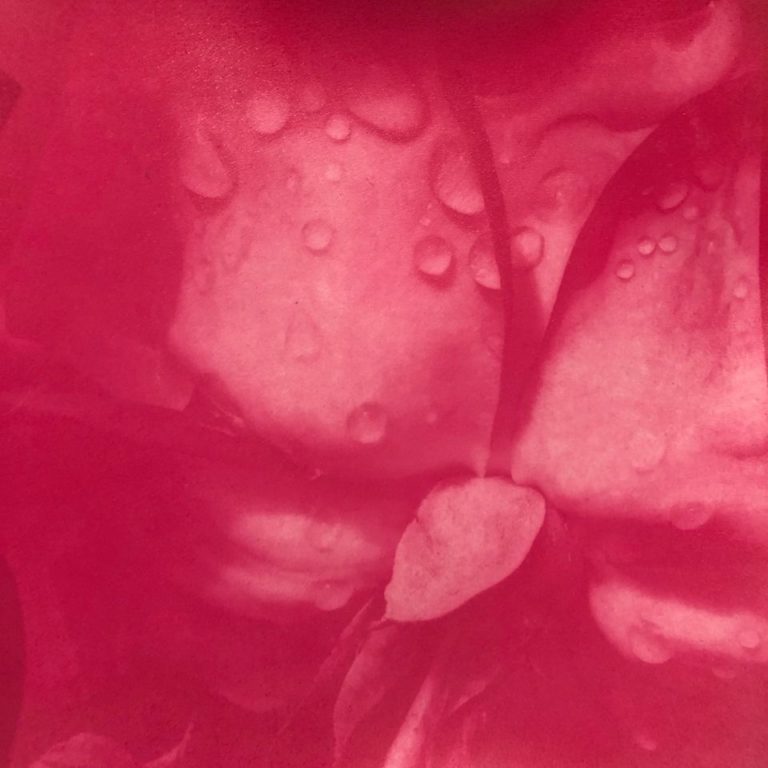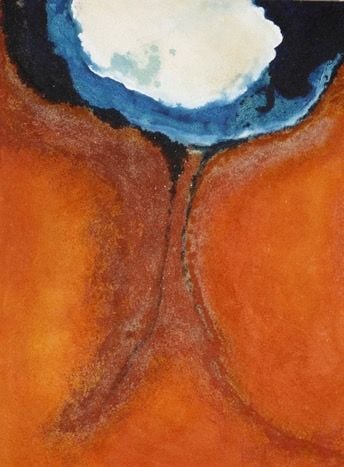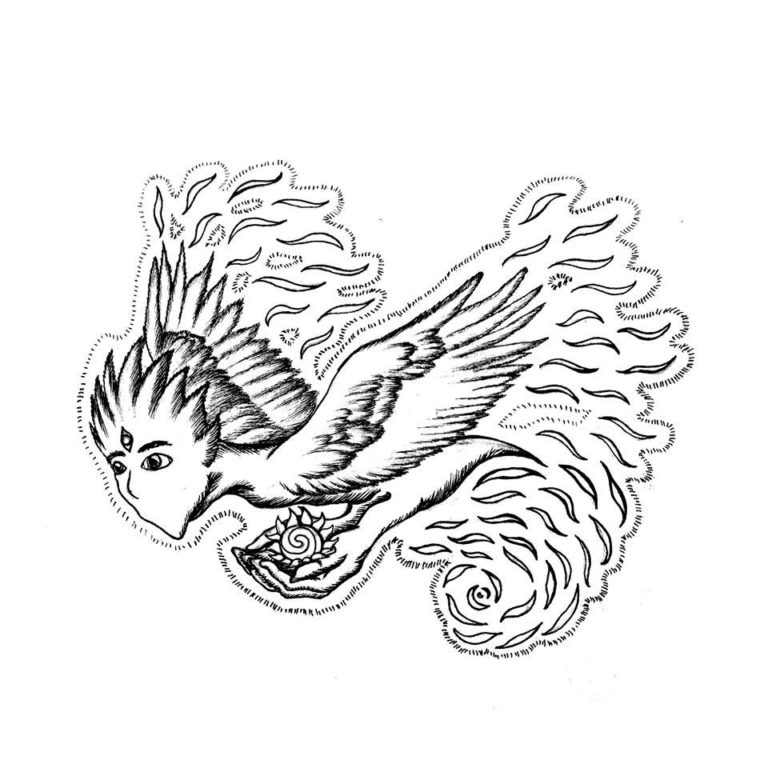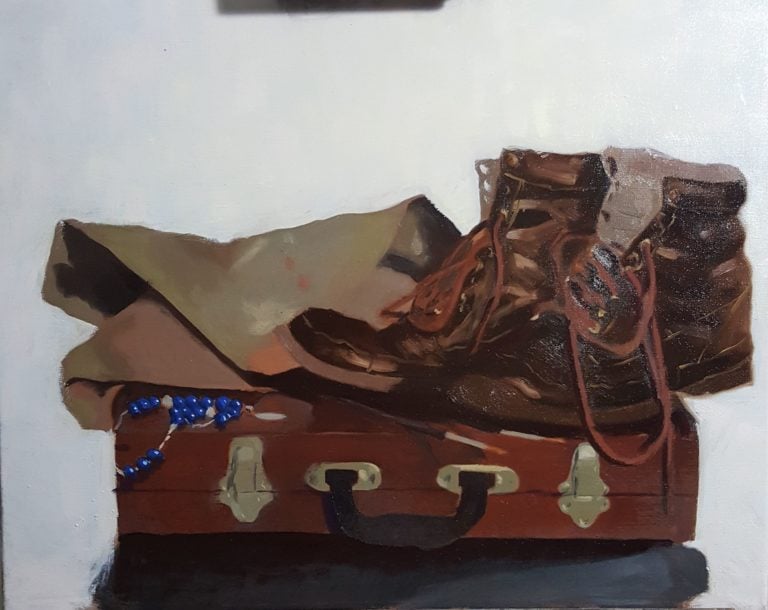The Greek Australian Cultural League (GACL) kicked off its 9th Annual Antipodean Palette Art Event yesterday at Steps Gallery featuring both established and emerging artists in an exhibition that aims to help them introduce their work to the broader public.
The exhibits include various mediums of artwork from painting and photography, to mixed media, 3D installations, sculpture, monotype prints and even jewellery. The official event was launched by Professor Nikos Papstergiadis, Director of the Research Unit of Public Lectures, School of Culture and Communication, University of Melbourne on Thursday 23 May at Steps Gallery.
The 15 artists exhibiting this year are Angy Labiris, Aphroditi Karalis, Barbara Kitallides, Christella Demetriou, Effie Chaniotis, Helen Sartinas, James Josephides, James Pasakos, Kyriaki Teo, Luke Spiliopoulos, Maritsa Micos, Masonik Arts, Menio Kottakis, Rolando Garay-Matziaris and Sofronis Michaelides.
Neos Kosmos would like you to meet the artists:

Angy Labiris (oil painting)
Labiris is basically self-taught, however her art history background has given her a love for the works of the old masters and their subject matter.
“I paint mainly on board and sometimes on canvas. I have transitioned from painting with acrylics to painting in oils as I felt that acrylics had shortcomings. When I changed medium, I found that oil paint was too slippery and took much longer to dry. To create a rich, textured surface I developed an impasto technique using predominately sticks and the palette knife and to a lesser degree the brush. I have always loved landscape and like creating the illusion of being able to enter a picture and explore a rich, colourful, mysterious or sinister world. I am also fascinated by the ambiguous and abstract forms found in nature. I hope my pictures allow you to enter my world.”

Aphroditi Karalis (bromoil photography with oil based inks)
Karalis’ interest in the Bromoil print began when she attended the Hellenic Museum in 2018 to see an exhibition of work belonging to Nelly – the famous Greek photographer who worked between Dresden, Athens and New York in the early 20th century; a time when Bromoils were being developed. Her beautiful Bromoil prints of dancers on the ancient stones of the Parthenon piqued Karalis’ curiosity of this technique, a process where silver halides on black and white photographic prints are replaced with oil-based inks.
“The ‘matrix’ is a work in progress which came from a need to explore alternative photographic processes and in turn explore my own moment in time. In my series, four out of the five images have gone through the process of being developed in the dark room, bleached, tanned and inked except for ‘The Pneuma’. The photograph has been left without ink and remains ghostly green –this print is called the ‘matrix’ in the Bromoil process – it’s from this point that the magic happens.
When I searched a little more about the meaning of the word matrix I found that the Greek word for ‘matrix’ is μήτρα translated as womb and symbolically, birth or rebirth if you like. And so from this ghostly green image once ink is applied no two images will ever look identical – the applicator, the texture, the ink, the colour, the paper, the temperature, the moisture will all play a role.”

Barbara Kitallides (acrylic enamel varnish on canvas with hand painted ‘marbled’ frame)
Born in Paphos, Cyprus. Barbara Kitallides is a multidisciplinary artist living and working in Melbourne. Barbara’s artwork is an investigation of life and place in the modern world and a depiction of how her inner conscience interacts with her external surroundings. Most recently Barbara has exhibited in Australia, London, Hong Kong. She has also garnered a strong following and collectors throughout Europe, Asia, New Zealand, North America and Australia.
“There is a constant push-pull effect of anarchy and control in my work. Engaging in an unspoken dialogue through colour, scale, form, materiality and the physical space. Through the depth of each colour we see symbolism. The candy pink representing the heart, oozing flesh and raw emotion. Jungle green reminiscent of military ‘camouflage’ pattern. The placement of pop colours against black acting as a vehicle to liberate and repress all at once.”

Christella Demetriou (sand, oil and encaustic wax on canvas)
Christella Demetriou is no longer with us, having passed away after a long battle with cancer, however, GACL decided to honour her by including some of her most iconic works in this year’s Antipodean Palette exhibition. Speaking about her own work, Christella had previously stated:
“In this vein I believe the most beautiful place is the one that continues to enchant us no matter how old or how dumb it may be as it awaits to be transformed by nature’s forces: the colours of spring, mauve, green, golden yellow and light blue of summer, the rusty ochre of autumn, the thick fog and the deep red Erica bushes of winter. We create memory and desire simultaneously in the same way, when internalising an image of such a quality that can alter our perception. I do not wish to change this image, I do not wish to own it as it is already mine, like the other that I love, for the only reason being that the other is inside all the shades of colour, inside all these shadows and inside the seas I remember”.
READ MORE: Poetry night in memory of Christella Demetriou

Efrossini Chaniotis (acrylic and mixed media on canvas)
Melbourne-based Chaniotis creates colourful, intricately detailed paintings and sculptures with mythology and storytelling playing a major role in her work. She started her journey in art school, primarily in performance art where one year during enrollment she took on a surreal character and wore a pumpkin on her head; and let’s just say that along with a fellow performance artist, they shocked, frustrated, intrigued and entertained everyone present.
“I went on to explore all art forms in that art school and loved the idea-friendly environment that suited my imagination. Miraculously, I then found myself across the seas in a prestigious European art school; one whose corridors were lined with the biggest collection of famous sculpture casts in the world, I spent most nights doing academic life drawing in a basement amphitheatre filled to capacity. This is just a glimpse of how amazing this place was. It gave me the chance to essentially learn how to draw and paint and cultivate more feeling and reverence towards art making. I’m so grateful for that experience.
Finally back in Australia, I emerged as a passionate and qualified art therapist doing psychotherapy art sessions in a psychiatric locked ward. That was another eye opener and made me keenly aware of the healing power of creative expression. Eventually I went back to just the art, but this time I had clarity of purpose and a desire to contribute by telling spirited stories through my art.”

Helen Sartinas (photography)
Sartinas’ work is inspired by the Mexican ritual of the Ofrenda, ie. offering – an altar set up to welcome the spirits of loved ones. The ritual originates from the Aztec belief that the spirits roam and enter different realms in the afterlife.
“Ofrenda coincides with the Day of the Dead festivities with celebrations and communication with the deceased at cemeteries. Referring to these dualities of death in life, I am honouring the spirit of lost intentions of my familial past through an image that inspires contemplation, invoking forgiveness and hope. The sentiments continue with the familial reference removed, leaving then to contemplate on – what remains…”

James Josephides (pencil, ink on canvas)
Designer, animator and an all-round creative person, James Josephides loves to take ideas and bring them to life. As arts was with James throughout his life, he discovered a certain passion with drawing and animation. Working with lots of digital platforms, James tapped into the world of Motion Graphics and has allowed him to transform his artwork into moving visuals. His main medium for traditional artwork is through the use of pencil and fine liner as they go well together through the technique of hatching. His artwork is a demonstration to make others feel what the image is telling them through a sense of movement, form and expression. This is determined from their own ideas and what it may bring out in them.
“The layout was inspired from the Golden Ratio. A series of equations that flow in an infinite ascending and descending dimension. This equation is seen everywhere in the universe and relates to the unfolding of creation. We see the beauty and the connection through the circle of life. This resonates with me very deeply.
Each canvas has its own meaning that correlates to my own self-discovery. Manifesting a world in love, play and self-expression. To keep yourself grounded and balanced through the hard times and the good, to move forward along one’s path to abundance. Maintaining a free spirit with support in partnership and relationship through optimistic encouragement, determination and leadership bringing mutual understanding.
They’re placed in a manner to draw you closer to a personal message. That message starts revealing the inner world to the surface of one’s reality. Only you can decide what this message means to you. Creation can be a catalyst from within. The reasons may not be the same as the creator’s, rather it can spark the differences of various insights and ideas within others. This encourages connection, conversation and the understanding of each other. “

James Pasakos (monotype printing)
Pasakos reflects scenes of the Melbourne Docklands. It holds many experiences of his childhood, culture, home and the formation of himself, as artist. The work is part of an ongoing personal journey to endeavor to understand belonging and identity, to form his own connection between the two worlds of his Australian and Greek heritage.
“I often visit the Melbourne Docklands to collect my thoughts and to view the maritime landscape, to seek my own iconography, narrative, purpose and understanding of sense of place. The Docklands is an historical area with much significance to the Australian contemporary landscape, which came into prominence during the Victorian Gold rush of the 1850s as a very busy Melbourne shipping hub. Part of an ongoing series portraying the Docklands, is to continue the narrative of travel and discovery. During my overseas travels through Europe, Asia etc. I often consider the valuable migrant stories of travel. My work reflects these powerful experiences as they act as reminders of the fragility of our sense of self in the world, and the way in which that sense of identity may develop and spawn new cultural identities that change or shape values of other cultural frameworks.”

Kyriaki Teo (bronze scultpure)
Inspired by Teo’s birthplace, Kyriaki has created a bronze table top sculpture that captures Australia’s unique native flora, fauna, landscapes and roots. ‘Australiana’ is strongly influenced by the shapes and textures found in nature more specifically on the exploration of the individuality of each native seedpod and gamut.
“My curiosity grew greater as the years went on into my teens and I began to challenge social norms within my artwork, my ‘education’ and within my identity. Additionally, my works also challenge social constructs and the power of humanity, particularly on the topic of their path of self-enlightenment. Each individual artwork of mine carries its own style at the moment, as their themes are so diverse yet styles such as Classicism, Pop art, and Surrealism can be seen from the viewers’ first glance.”

Luke Spiliopoulos (oil on linen)
Born and raised in Melbourne, Spiliopoulos has been drawing and painting since he was a small child and decided to study graphic design when out of school.
“I quickly found that I was just trying to incorporate art into design at every turn and that the field was just not for me. So I choose to dive deep into the realm of painting and focused on improving my technique and expression. Largely self-taught I hope to continue my craft and make a career of it. My inspiration and a lot of my subject matter centers around the figure and moments that describe us as humans.”

Maritsa Micos (mixed media collage)
Micos’ pieces are influenced by the many types of storm experiences and the effect of said predicament -literally or metaphorically- on someone’s life.
“I believe to create one must embark on a journey of deconstruction or even destruction in order to seek the soul of the artwork. The storm acts as a catalyst for this process. I have taken the viewer on a journey through the many facets of a storm. I am interested in the composition of a storm and the inevitable metamorphosis that takes place during a storm occurrence. My intention was to recreate its energy and personality through abstract gestures and marks within a contemporary mixed media palette.”

Masonik (alumalux photographic prints with chain mounted blue ray box and high definition 2 channel audio and video content)
Masonik is an Australian multi-disciplinary arts collective; a quartet who have performed and nationally and internationally since 2006. Masonik’s immersive experience creates electronica / jazz-fusion / neo-classical and soundscapes layered with video projections. As visual artists, Masonik generate artworks based in graphic design, film, photography, sculpture, installation and theatre.
“Night-scape and Sky-scape are two photographic / sculptural / video works that were created in Athens. Skyscape depicts the sky of Athens mountains intersect with apartment buildings and antennas. Night-scape depicts Athens at ground level paved streets and ancient walls covered in graffiti. From each photographic representation hangs a hand-made casing containing the video form of each piece.
Night-scape and Sky-scape are two works from our much larger art installation titled ‘Altar’d Lament’. This project contains works inspired by the Greek musical movement of Rembetiko and the events of 1922 in the city of Smyrna.”

Menio Kottakis (photography)
From watching TV to studying films and advertising, to dreams and imagination, and to paintings on display at a gallery, Kotakis has always felt at home when confronted by imagery.
“Imagery has always played a large part in my life. Learning to use a camera seemed a natural step for me to take. I wanted to make imagery that was inspiring to me. In this exhibition, of first learning how to use the camera semi-competently and through editing and printing, I hope to show something of what has influenced and inspired me to try to make images from my perspective.”

Rolando Garay-Matziaris (collage, pen, pencil on paper)
Greek-Chilean-Australian Garay-Matziaris graduated with a Master of Fine Arts from RMIT with distinction in 2016, and received the ADFAS Young Arts Award in the same year. He has participated in various group shows in Melbourne as a visual artist, as well as successful solo exhibitions at Tinning Street Presents and Trocadero Art Space. In 2017, he was awarded the Kleio Art Scholarship.
“My work is informed by his cross-cultural identity, experiences, and reflections on the Australian identity. My practice incorporates digital collage, drawing and commercial printing techniques in order to explore cultural identities, hybridity, and value systems found within the context of multicultural Australia.”

Sofronis Michaelides (heritage style jewelry)
Born in Limassol, Cyprus, growing up, Michaelides had no interest in making jewellery even though his father was a goldsmith. It was some years later that his interest was aroused when he developed a passion for the ancient Greek art.
“In the late 70’s, I grew sugar-cane in Queensland. Even though it was busy throughout the cane season, there was a lot of time to spare during the ‘slack season’. I mostly enjoy sculpturing with wax, working with gold and silver, mold-making and centrifugal casting.”
When: Until Sunday 2 June 2019 – Open weekdays between 10:00am ‘ 4:00pm & weekends between 11:00am ‘ 5:00pm.
Where: 62 Lygon Street Carlton, VIC